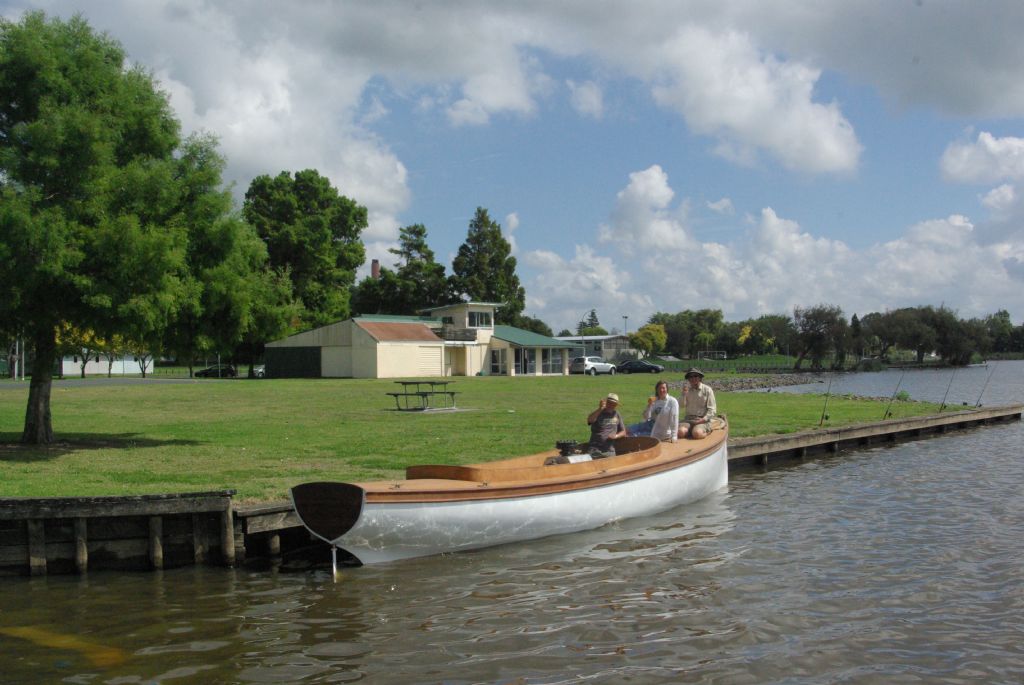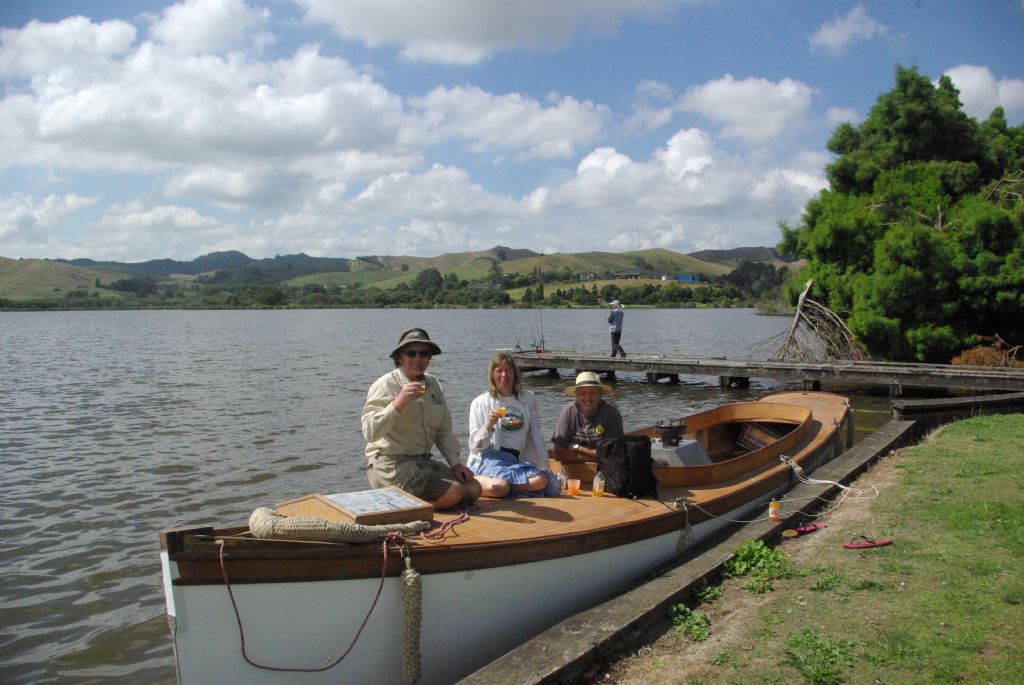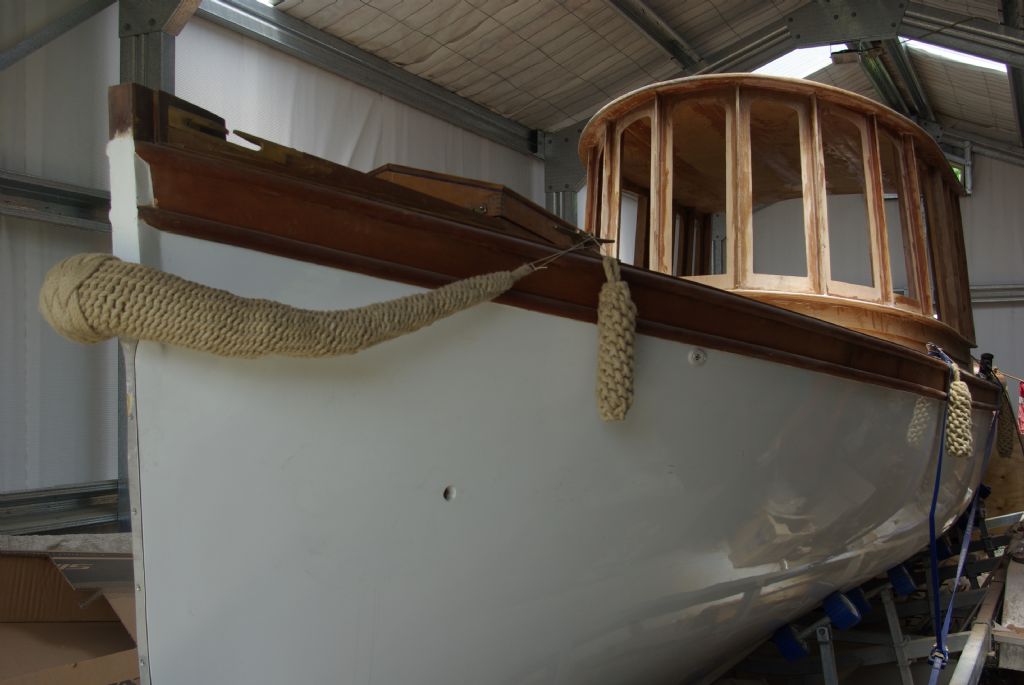Hi All, thanks for the kind remarks. As Bazyle noted, there are more pics in my album and I will try to add some more later.
Ok, so as requested a few more details. As you might know, the speed of a displacement hull like this is mostly limited by the wave drag. A long hull is easier to drive than a short one. Because of its weight a steam plant has to sit in the middle of the boat, thus taking up what would otherwise be the most useful space. The concept then was to make the hull long and narrow in order to get some useful space in the ends. The question becomes how long and narrow can we safely make the hull. Since the boat was to be trailable, one restriction is the the permissable length behind the towing vehicle. When I started, this was quoted as being 10 metres behind the towball. Allowing a bit of clearance at the front, this gave the thirty foot length. The next problem is keeping the weight within limits, and also obtaining stability. A steam plant requires a large propeller, which implies a fairly deep hull. The total weight must be enough to keep the prop immersed, so a large beam would mean that the hull had to be quite heavy. So the beam was kept quite narrow, at 6 feet. The hull has a steep rise of floor (V shaped) which reduces the displacement. My naval architect went to work on all these constraints and came up with the design you see. The design weight to bring her down to her marks is 2.4 tonnes. At present the bare hull without the plant weighs just on 1tonne, which includes about 150 kg of lead ballast built into the keelson. The boiler weighs about 400 kilos and the engine maybe about 100. For the launching we filled all the tanks we could with water, so maybe another 200 kg there. The design draft is 2 foot 6 inches. We can reduce this to two feet by putting on a different skeg and a smaller propeller, at some cost to efficiency.
The hull is built with cedar strip planking, glassed inside and out. The keelson is Jarrah, a heavy Australian timber, which adds some weight and strength where it is needed. The deck is a 19mm foam core with 3mm ply inside and out. On top it is planked with a 5mm thickness of New Zealand Kauri, joggled and caulked to look like a proper planked deck. The cabin roof is also done with a foam core and the thin ply.
The accommodation space starts with a compartment for a gas bottle right in the bows. Next, under the hatch that can be seen in the photos, is a toilet compartment. The hatch can be removed and set up high on some poles so that it is possible to put a curtain around and use a little hand held shower. Next is a place to sleep under the foredeck, with the black water tank underneath. At the fore end of the coaming area is a small galley…so far I have made the refrigerator and a mock up of the cabinet for the two burner gas cooker and a small sink. Both of these will slide out when in use and tuck away when not needed. There is a steering position on the starboard side. Next aft is the boiler and engine. There is a water tank under the boiler. Behind the engine there is provision for a large comfy upholstered seat, and fuel tanks under the deck. The tanks have a tunnel through them for the shaft. Under the aft deck is a quarter berth so we can sleep up to four people, so long as they all get along well!
The boiler is a three drum (Yarrow) type. In my album there is a picture of a completed one. It has been designed to ASME standards and built with traceable materials so that it can be fully certified. Mine will be oil fired, using used cooking oil for preference, and Diesel oil otherwise. The engine is a compound, with three inch and five inch bores and a three inch stroke. it is to the Leak design, except that I changed the low pressure to a piston valve. The boiler is rated for up to 250 psi but I plan to run at 175 maximum.
We towed her to a steam rally near Auckland last weekend, about a two hour drive, and she towed well on the trailer, which is fitted with electric brakes. Launching and recovery at a lake we passed on the way home proved to be no problem at all. You do want a good ramp and a good towing vehicle. A friend with a Nissan Safari did the towing for us.
regards
John
John Olsen.









